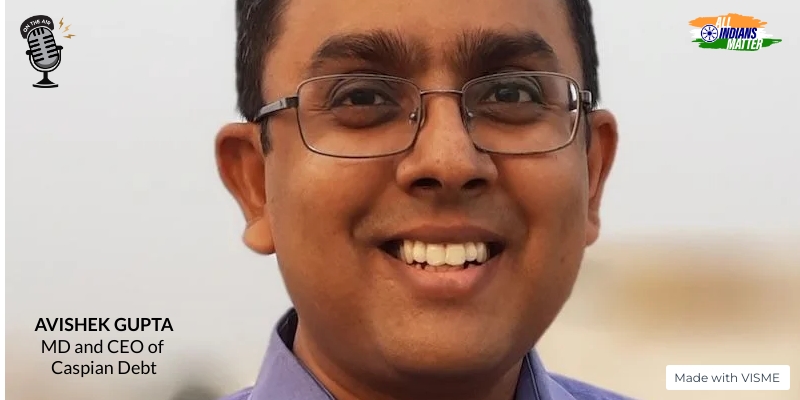Ashraf Engineer
June 8, 2024
EPISODE TRANSCRIPT
Hello and welcome to All Indians Matter. I am Ashraf Engineer.
As the upwards trajectory of the financial technology, or fintech, revolution continues in India, in particular focus are digital lending companies. Digital lending in India has logged a compounded annual growth rate of 39.5% over the past 10 years. This space has also received investments in excess of $1 billion and it is estimated that the digital lending market will grow to an astounding $515 billion by 2030.
SIGNATURE TUNE
Let’s look at the story of digital lending in India. It first made an appearance in the late 2000s through platforms like Bank Bazaar, which offered consumers a way to compare different loan costs and apply for the one that worked best for them. This brought in a level of financial education and transparency that didn’t exist earlier.
As the mobile and data revolution gathered steam, digital lending platforms took off too. The government, seeing the potential of digital lending, made it easier for lenders to offer loans through such channels. The Aadhaar platform, meanwhile, enabled digital lenders to check borrowers’ creditworthiness quicker and made disbursements more efficient.
Digital lending platforms essentially access and process huge volumes of data in real-time to conduct credit scoring and analysis, and process loan applications. The sources of digital information include financial transactions, e-commerce transactions and even social media interactions. Platforms use advanced analytics and algorithms to assess creditworthiness and shrink processing times.
By 2017, the market was so promising that large banks, such as HDFC, ICICI and Axis, also started disbursing loans online.
Meanwhile, fintech majors like Paytm and MobiKwik made an entry, leveraging their user base and payment ecosystems.
Today, digital lending is nuanced through models like P2P lending, small and medium enterprise financing and short-term credit. The buy now pay later apps are also on fire.
Data seems to be the major growth driver with platforms targeting offerings to customers most suited to them. Also, digital lending offers better margins than other fintech models.
There are new models, too, such as co-lending. The origins of this lie in the COVID-19 pandemic, which resulted in lender defaults to the tune of 10% to 15%. The non-performing assets of non-banking finance corporations soared and it seemed like a good idea to spread the risk. Enter co-lending.
Co-lending is an arrangement through which multiple lenders come together to offer loans to borrowers. This increases lending capacity and reduces risks for individual lenders.
Industry experts believe that co-lending will emerge as a strong model in the days to come.
How does digital lending work?
It involves three entities: a lender, a lending service provider through which the loan is facilitated and a borrower. In addition to customer acquisition, service providers use their technical expertise to perform other functions for lenders, such as underwriting, pricing, and loan servicing, monitoring and recovery.
Some service providers work with lenders to reduce the risk of defaults through an arrangement called default loss guarantees, or DLGs. DLGs facilitate risk sharing between lenders and service providers, enabling lenders to extend loans to those who they may not have otherwise lent to. Reserve Bank of India regulations mandate a 5% cap on the total amount of DLGs that service providers can offer a lender.
Last year, the Reserve Bank issued guidelines for fintech. Before that, there were several predatory and illegal digital lending platforms. Many charged insanely high levels of interest. They even exploited mobile phone data access to extort money from borrowers. Now there are disclosure and data restrictions to prevent such practices.
Lenders also have to ensure that all the data collected by their lending service providers is need-based, done so with the customer’s explicit consent and stored in India. It’s called data localisation.
There was also the requirement for a grievance redressal mechanism. To this end, all lenders and lending service providers were required to appoint nodal grievance redressal officers and resolve complaints within 30 days. There was also the RBI’s Complaint Management System Portal through which borrowers could reach out directly to the RBI.
This action was only natural because, as the digital lending space has grown, so have the risks. These include unauthorised lending, theft of financial data and hacking.
There have also been growing concerns about manipulative practices. During the COVID-19 pandemic, for example, apps promising quick cash disbursements mushroomed and targeted first-time borrowers with high interest rates. Since formal credit is still out of reach to large parts of the population, these apps seemed like a good idea. However, it is these sections who also couldn’t tell what was legal and what wasn’t and also whether or not they were being taken for a ride.
In response, technology companies and regulators came together to crack down on such apps. For example, Google blocked hundreds of apps from its Play Store to protect borrowers from deceptive practices. Now, platforms must show lending licences and they cannot ask for full repayment in less than 60 days.
As part of its ongoing effort to protect borrowers, the Reserve Bank also published a draft framework to recognise self-regulatory organisations, or SROs, for the fintech sector, including digital lenders. The SROs are meant to set, monitor and enforce standards and codes of conduct, and notify the Reserve Bank of statutory or regulatory violations.
With the rapid advancements in technology, digital lending could well become the standard way of disbursing loans. And you can expect new offerings and innovative solutions. What it needs is a strong hand on the regulatory steering wheel to ensure complete protection for consumers.
Thank you all for listening. Please visit allindiansmatter.in for more columns and audio podcasts. You can follow me on Twitter at @AshrafEngineer and @AllIndiansCount. Search for the All Indians Matter page on Facebook. On Instagram, the handle is @AllIndiansMatter. Email me at editor@allindiansmatter.in. Catch you again soon.






